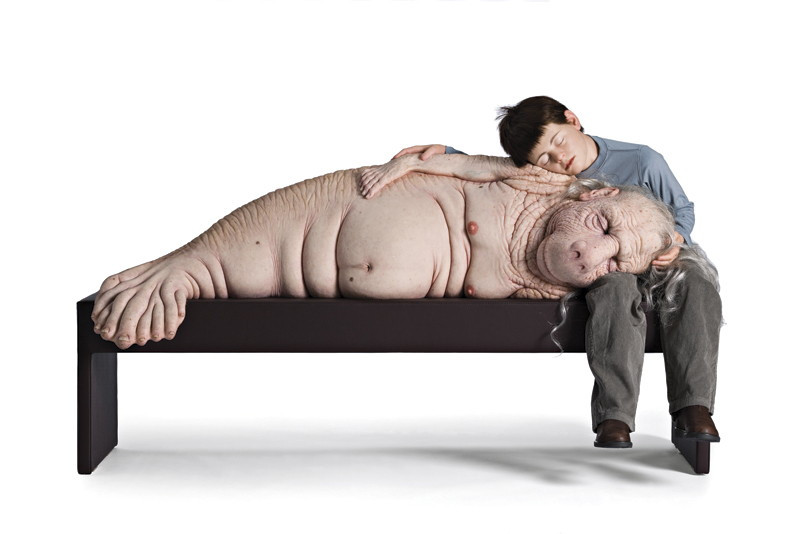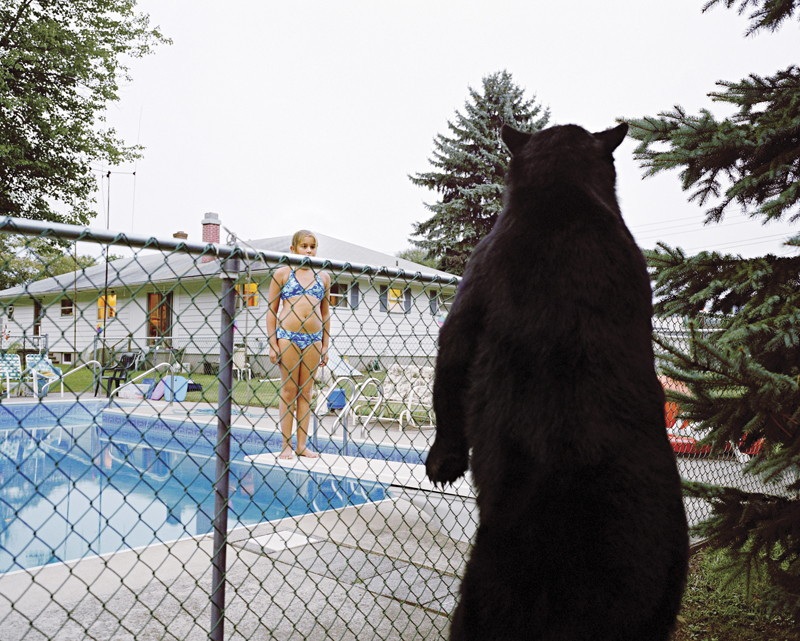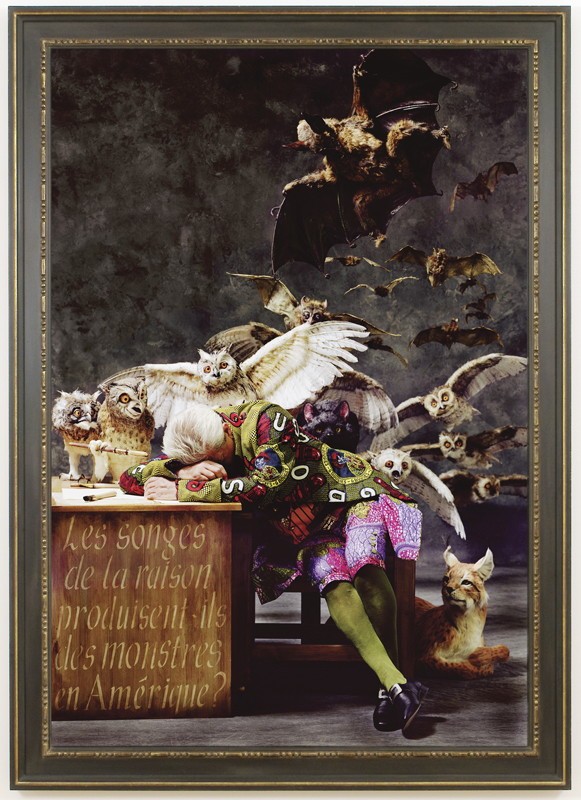Some kind of monster
New WAG exhibition aims to provoke enchantment, fear and curiosity
Taking the first step around the corner of a bright green wall, you don’t know what to expect. But all at once you’re hit with fascination, fear and excitement.
A girl is singing to herself in a projected video, dark and colourful images hang on each wall and in the centre, a little boy sits peacefully, lovingly holding on to a grotesque creature.
It’s all part of Fairy Tales, Monsters, and the Generic Imagination, an exhibition currently showing at the Winnipeg Art Gallery that includes over 60 works inspired by literature, science fiction and genetic experimentation.
“What seems to be ugly immediately is actually quite beautiful,” says Mark Scala, chief curator at the Frist Center for the Visual Arts in Nashville, Tennessee where the exhibition debuted in February.
Scala says it’s the grotesque images that draw people in. They want to look away, but are fascinated by what is first interpreted as ugliness.
The exhibition caters to each of the senses through video, sound, paintings and sculptures.
“I really wanted it to be a very dynamic experience for people,” Scala says. “I wanted the experience to be a media version of the hybridity. Each medium has a certain kind of impact - from enchantment, to fear, to curiosity.”
A brightly coloured corner of the exhibit features costumes and sets made from recycled material. A video plays showing the costumed creatures in action. They are plant-human hybrids from No Place, a utopian world created by artist Saya Woolfalk.
“The choice of recycled materials is that the people of No Place use our refuse,” Woolfalk says. “The craft-based aesthetic is accessible – you know that it’s all kind of imagined and child’s play and fictional. Anyone can achieve it.”
Part of her artwork is a video titled “Ethnography of No Place,” which she collaborated on with anthropologist and filmmaker Rachel Lears. Each chapter of the video is about a different emotion, ritual, or change in life - something that is important to the people who are wearing the costumes for that scene.
“Everything is a part of the worldview of a world that I’ve been building and collaborating on for 10 years,” she says.
The exhibition is split into three categories - “The Fairy Tale,” “Monsters” and “The Genetic Imagination” - but Scala says each category adds to the others.
“The real point is, we’ve always felt the need or the desire to use hybrid bodies, part human, part animal - be it in fairy tales, or in our imagination - to explore something conflicting or confusing that we may not want to face,” he says.
Woolfalk adds that children will know the fairy tales, but they may not know the complexity behind them and the lessons they aim to teach.
Scala notes that it’s interesting to watch a family go through the exhibition together, because each age group will experience the art differently.
“I hope that people come away really thinking about how much of their attitude or life was shaped by these stories, what they are in relation to their physical body, or what really makes a monster,” Scala says.
Fairy Tales, Monsters, and the Genetic Imagination is on display now at the Winnipeg Art Gallery until September 9. Visit www.tinyurl.com/WAGmonsters for details.
Published in Volume 66, Number 28 of The Uniter (June 27, 2012)










